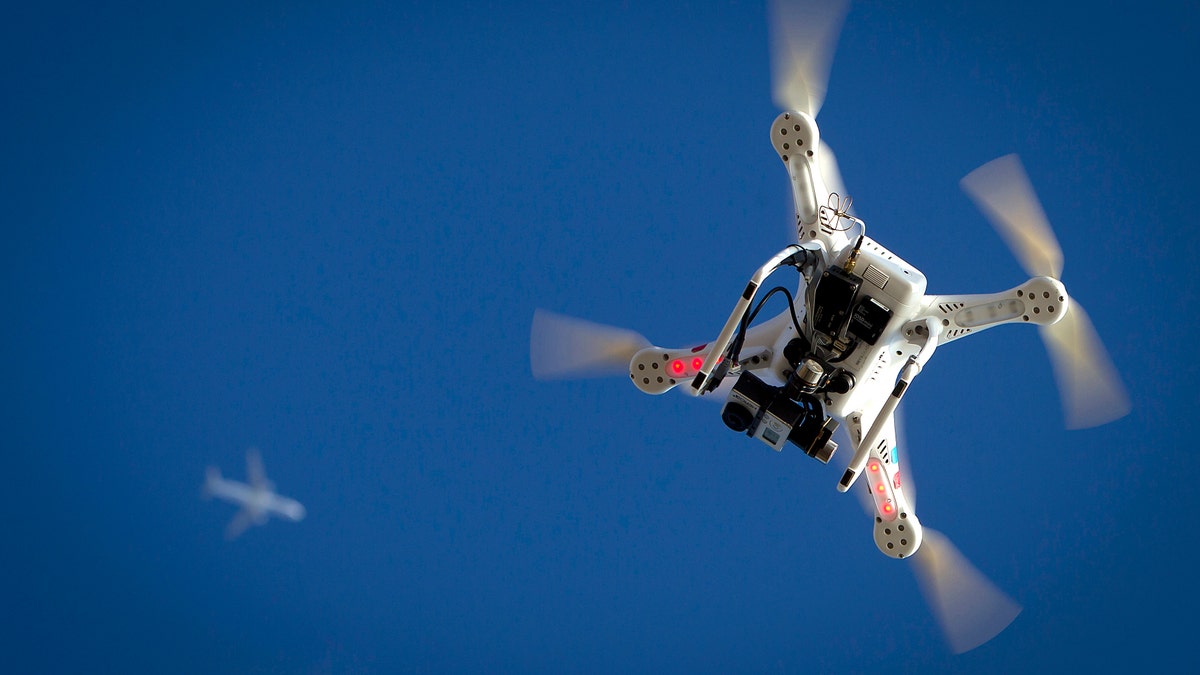
File photo - An airplane flies over a drone during the Polar Bear Plunge on Coney Island in the Brooklyn borough of New York Jan. 1, 2015. (REUTERS/Carlo Allegri)
Faced with a growing drone threat to aircraft, the Federal Aviation Administration has teamed up with IT specialist CACI International in an attempt to protect the airspace around airports.
Officials are alarmed by the scale of safety risk posed by drones, also known as Unmanned Aerial Systems (UAS). A study released by Bard College Friday noted 921 incidents involving drones and manned aircraft in U.S. airspace between Dec. 17, 2013, and Sept. 12, 2015.
In October, as part of the FAA’s Pathfinder program, the agency signed an agreement to evaluate CACI’s technology within a 5-mile radius of airports.
Related: The laser cannon that kills drones
“Safety is always the FAA's top priority, and we are concerned about the increasing number of instances where pilots have reported seeing unmanned aircraft flying nearby,” said FAA Deputy Administrator Mike Whitaker, in testimony before the House Aviation Subcommittee.
The FAA explained that CACI’s prototype sensor-based detection system will be evaluated at airports selected by the agency. Specific details of how the system will work have not yet been released by the FAA, although it will reportedly use radio signals to detect and tackle drone threats.
Arlington, Va.-based CACI referred a FoxNews.com request for comment to the FAA. The company, however, recently launched its SkyTracker system, which creates an electronic boundary around sensitive locations, such as airports.
Related: Amazon shows off drone delivery prototypes
The system uses UAS radio links to identify and locate drones flying in banned or protected airspace, according to CACI, and can also locate the drone’s operator. “The CACI system triangulates the position of misused UAS for accurate geolocation and tracking, while differentiating them from other UAS in the same area,” explains CACI, in a statement on its website.
CACI says that SkyTracker can also “initiate countermeasures,” effectively stopping specific drones.
The FAA is also reportedly looking at geo-fencing, a system that uses GPS and Radio Frequency Identification (RFID) technology to limit where unmanned aircraft can fly as it attempts to protect aircraft.
Related: 'Bird' gadget lets you control a drone with your finger
Missy Cummings, associate professor in the Department of Mechanical Engineering and Materials Science at Duke University, warns that developing effective anti-drone technology is a difficult task. “Tracking small airborne objects that are slow moving close to the ground is notoriously difficult with significant signal-to-noise ratio problems,” she told FoxNews.com, via email. “No system will be perfect and how to guard against interlopers, even if you could track them is, of course, another issue -- you can’t jam all GPS signals, for example, in an airport area because it would affect the planes trying to land and take off.”
The FAA prohibits the use of unmanned aircraft within 5 miles of any airport within the U.S. without permission from air traffic control.
On Monday the agency also announced new regulations requiring drone registration in an effort to keep track of soaring ownership. The online registration would apply to owners of small drones weighing more than 0.55 pounds and less than 55 pounds, including payloads such as on-board cameras, according to a statement.
The FAA’s progress around commercial drones has been a source of frustration for many companies. Amazon, for example, has been a vocal critic of the pace of regulatory efforts for commercial drones. Last year the retail giant threatened to move more of its drone development work outside of America unless the FAA relaxed its rules.
In May the FAA announced its Pathfinder testing program, which is studying drone use in a number of industries, such as newsgathering, agriculture and transport.
Follow James Rogers on Twitter @jamesjrogers








































